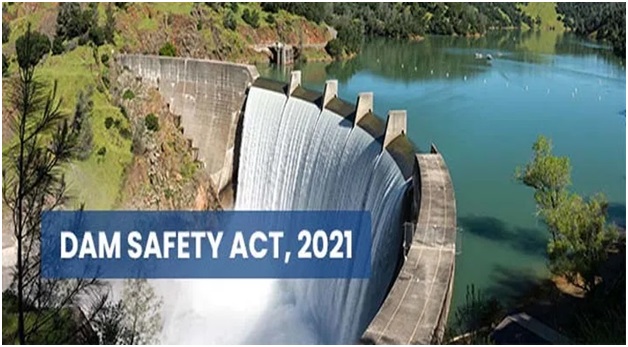Dam Safety Act (The Hindu)

- 23 Oct 2023
Why is it in the News?
- India has nearly 6,000 large dams, 80% of which are over 25 years old and pose safety risks.
- A new Dam Safety Act (DSA) was enacted in late 2021.
- On October 4, 2023, the Teesta III dam at Chungthang, one of the largest hydropower projects in India, was destroyed by a glacial lake outburst flood (GLOF) in North Sikkim's South Lhonak Lake.
- Since then, reports have shown there were no early warning systems, risk assessments, or preventive measures implemented as required by the Act.
What are the provisions of the Dam Safety Act, 2021?
- The Dam Safety Act was introduced in the Rajya Sabha in December 2021 in response to inadequate surveillance and maintenance, which resulted in dam failure-related disasters.
- The Act outlined important duties and required the creation of bodies at the federal and state levels to carry them out.
- Key provisions:
- Dam safety policies and rules would be supervised by a National Committee on Dam Safety;
- State-level disputes would be handled by a National Dam Safety Authority, which would also be responsible for implementation;
- The Chairman of the Central Water Commission (CWC) would be in charge of dam safety protocols on a national scale.
- There would be a State Committee on Dam Safety (SCDS) and a State Dam Safety Organization (SDSO).
What do the States need to do?
- States are required by provisions to: categorize dams according to risk of hazards; carry out routine inspections; develop emergency action plans; implement emergency flood warning systems; and carry out safety reviews and period risk assessment studies.
- States were asked to report and document incidents of dam failures.
- Until now, no statutory provision required systemic reporting of failures, and no single agency was in charge of tracking this information.
- The CWC maintains a list, but it is not consistently updated.
Is there any action taken for failing to comply?
- Any provision of the Act that is broken is punishable by imprisonment and/or monetary penalties.
- The entity shall be punished with imprisonment for a term which may extend to two years if such obstruction or refusal to comply with directions results in the loss of lives or imminent danger.
- For failing to comply with the Dam Safety Act, the Sikkim High Court ordered the Gati Hydropower Project company to pay two widowed mothers 70 lakh in February 2023.
What are the challenges?
- Blind spots in the implementation of the law
- The Dam Safety Act (DSA) fails to encourage transparency and does not support risk-based decision-making.
- Such disasters occur frequently, and their size reveals a pattern of neglect.
- Access to Information
- A strong Dam Safety Act (DSA) should make it simple for various stakeholders to access information, but India's framework falls short.
- Safety at dams serves a public purpose.
- The general public should have immediate access to all information regarding dam safety, including the roles played by all institutions, committees, and authorities, as well as their reports, decisions, minutes, and agendas.
- Nothing is, however, in the public domain.
- Absence of a cyclical review
- Periodic reviews are frequently not carried out, or if they are, the results are not readily accessible to the public.
- Comprehensive dam safety evaluations are mandated by the Act for dam builders. The failure's analysis and reporting, however, are not standardized.
How is dam safety undertaken?
Dam safety is a function of many parts:
- Design and Construction: Building dams with safety margins is the initial step.
- Dams should be designed and constructed to withstand potential hazards.
- Maintenance and Operation: Dams need regular upkeep and should be operated following safety guidelines to ensure their long-term stability.
- Real-Time Data: Continuous monitoring and recording of dam data in an easily accessible format is crucial for prompt action in case of emergencies.
- Hazard Forecasting: Being prepared for hazardous events is key. This includes forecasting potential risks and having emergency plans in place.
- The incident in Sikkim revealed poor compliance with safety measures, ranging from dam design to the capacity of spillways that manage water release.
- Hazard Profiling: Regular assessment and profiling of potential hazards are mandated.
- Hazards can change due to factors like climate change, urbanization, and water usage patterns.
- Periodic Reviews: Periodic reviews are essential to update inundation maps and dam reservoir capacity rules.
- This contributes to downstream safety.
- Review Frequency: Spillway capacity and safety metrics should be reviewed approximately every five years.
- However, these reviews may not be conducted as required.
- Dam Safety Evaluations: The Act requires comprehensive dam safety evaluations by dam builders.
- Unfortunately, there's a lack of standardization in how failure analysis and reporting are carried out.
- Non-Compliance: In certain cases, such as the July-August floods in Himachal Pradesh, dam builders were found guilty of non-compliance with dam safety regulations, leading to government notices.
